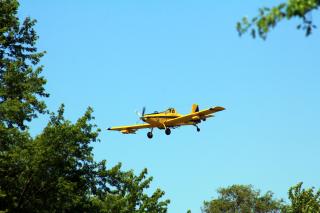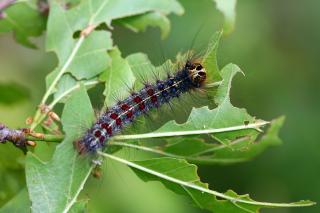Slowing the spread: 10 million acres treated

GEORGIA—A collaborative group working to slow the spread of the invasive spongy moth just reached a major milestone: 10 million acres treated.
“A hearty thanks to everyone working to stop the spread of the spongy moth,” said Tom Coleman, Forest Service entomologist who manages the Slow the Spread program. “This achievement represents more than two decades of work by a multi-agency partnership that includes 11 state agencies, two universities, a nonprofit foundation, USDA Animal and Plant Health Inspection Service and the Forest Service.”
Spongy moths begin life as very hungry caterpillars. They can quickly defoliate a tree, which can weaken or kill it: most commonly, they kill oak trees. Last year, spongy moths affected about 1.6 million acres in the East and Midwest.
Spongy moth is a federally regulated insect that feeds on more than 300 tree and shrub species. It was first discovered in Boston in the 1860s. The national Slow the Spread Program, in conjunction with government eradication and regulatory efforts, benefits the United States by slowing the moth’s expansion into oak-dominated forests.
The Forest Service manages the program, which has successfully reduced the rate of spongy moth by 83% from its historical spread rate. To accomplish the work, a network of about 62,000 traps locates new infestations that have spread from quarantined areas.
The primary treatments for the program use low-flying aviation resources. Through aerial spray, the program applies mating disruptant, which prevents males from locating females, as well as a naturally occurring insect bacterium that kills feeding caterpillars to suppress new infestations.
The 10-million-acre milestone was reached while treating land in Virginia. The program is slated to continue as the spongy moth remains a threat to forests.

